12 must-see destinations in Hanoi
(VNF) - These are images of the most popular tourist sites in Vietnam’s capital city through the photo album titled "Hanoi – Nhu toi thay" (Hanoi – As I see) of Tuan Dao, a Hanoi-based photographer.
Hanoi Opera House
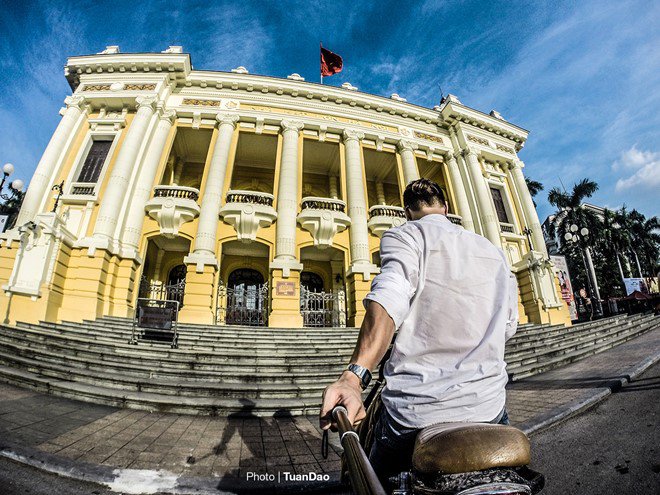 |
The theatre is located at No.1 Trang Tien street on the August Revolution Square, the center of Hanoi, near Hoan Kiem Lake and the Vietnam History Museum.
The 2,600m2 theatre was designed by two French architects Harlay and Broyer. The construction took place from 1901 to 1911. It’s a phenomenal piece of neo-classical French architecture featuring Gothic themes on the doors and domes with pillars, shuttered windows, balconies and a glass room.
Hanoi Cathedral (St. Joseph’s Cathedral)
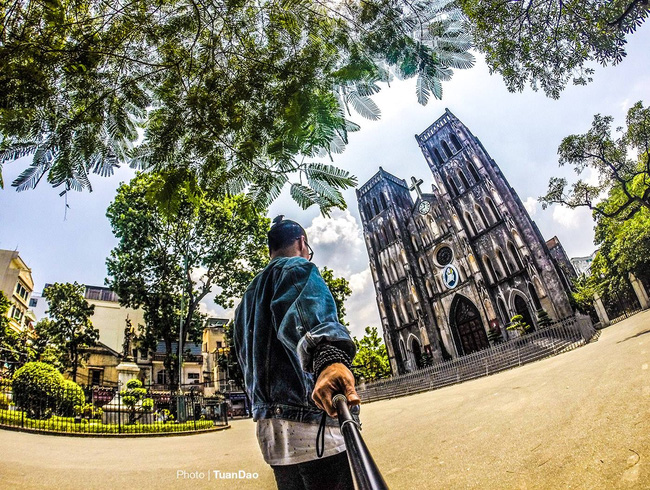 |
Saint Joseph Cathedral, located at 40 Nha Chung Street, Hanoi, is a Roman Catholic cathedral with neo-gothic style, which was built about 120 years ago.
In 1882, after the French army conquered Hanoi, the cathedral was constructed and completed in 1886. The cathedral and Nha Chung area were built on land formerly belonging to Bao Thien pagoda, which was built under the Ly dynasty.
The architecture with domes of the cathedral follows the Gothic style and design of Paris Cathedral. It is 64.5m in length, 20.5m in width with two bell towers of 31.5m-height. Though the appearance of the cathedral, from the doors, the colorful window glass, to the religious paintings, it follows Western style, and the main interior part is decorated in Vietnamese way with two typical colors yellow and red. Outside, in front of the cathedral is the statue of Mother Maria.
Ho Chi Minh Mausoleum
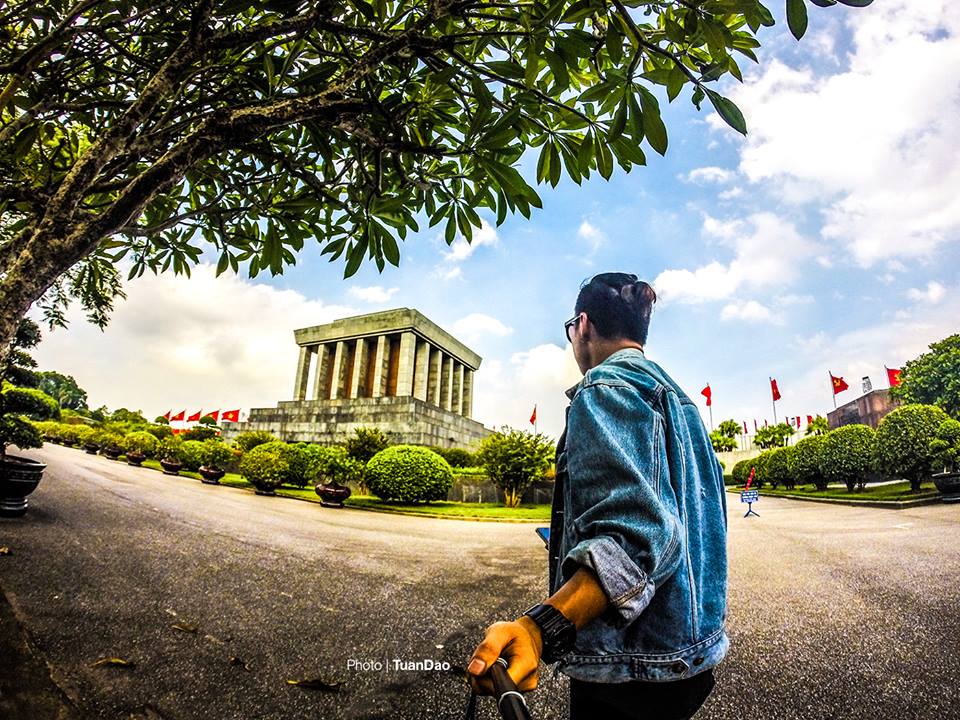 |
Ho Chi Minh Mausoleum in Ba Dinh Square is one of the most visited attractions in Hanoi.
It is the final resting place of President Ho Chi Minh, the most iconic and popular leader of Vietnam. His body is preserved here in a glass case at the mausoleum.
For visitors, a trip to President Ho Chi Minh’s final resting place can be an extraordinary experience as it is not just an average attraction; it’s part of history. Started in 1973, the construction of the mausoleum was modeled on Lenin’s mausoleum in Russia and was first open to the public in 1975. The granite building meant a great deal for many locals as it ensures that their beloved leader ‘lives on forever’.
Hanoi ceramic road
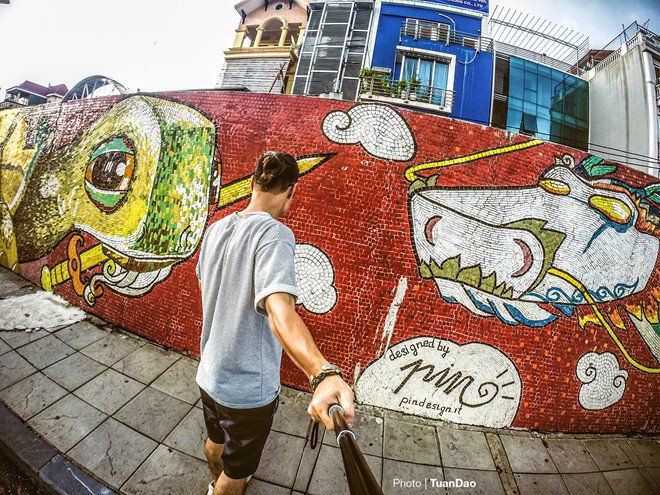 |
With a length of about 4 km, the Ceramic Road is one of the major projects developed on the occasion of Hanoi’s Millennial Anniversary.
The Hanoi Ceramic Road originated with journalist Nguyen Thu Thuy. The work of decoration began in 2007 and finished in 2010 to commemorate the Millennial Anniversary of Hanoi in October 2010. Participating in the work of decoration were not only Vietnamese artists but also foreign embassies and culturalcenters in Hanoi such as the Goethe-Institut, L’espace, British Council, Dalte Centre and other cultural centers from Russia and South Korea.
The content of the mosaic represents decorative patterne from different periods in the history of Vietnam. Also incorporated on the wall are modern art works, paintings of Hanoi and children’s drawings.
Phu Tay Ho (Tay Ho Temple)
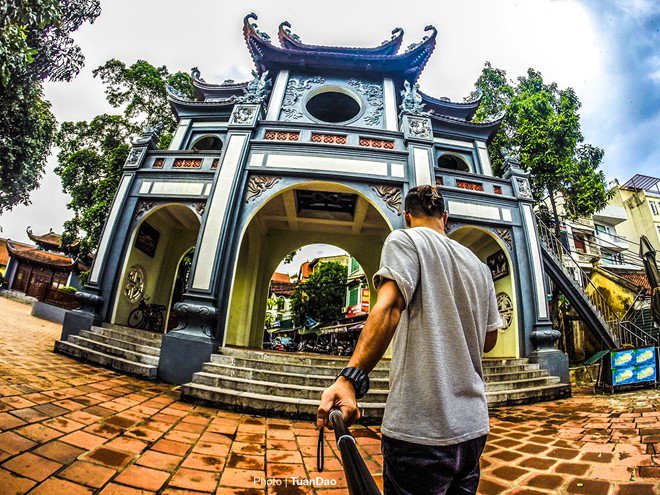 |
Phu Tay Ho (Tay Ho Temple) is located on a peninsula in the middle of West Lake shore in Hanoi.
The temple was said to be built in the 17th century, maybe later. Phu Tay Ho is dedicated to the Mother Goddess Lieu Hanh, one of the Four Immortals in Vietnamese mythology.
Just beyond the temple’s entrance, there are delicious dishes like bun oc (snails and rice vermicelli soup), oc xao chuoi dau (starchy green bananas with tofu, scallions and herbs). Banh tom (crisp shrimp) is available throughout the country but it is best to have it at West Lake, around Phu Tay Ho temple.
The Government Guesthouse
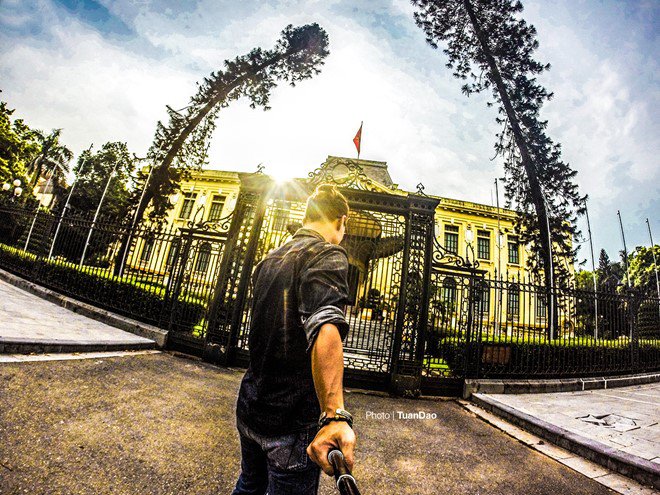 |
This elegant building was built in the French architectural style. It is located on Ngo Quyen Street, a short distance from the Sofitel Metropole Hotel.
The Government Guesthouse was formerly the Residence of the French Governor of Tonkin. Tonkin is the historical name for northern Vietnam. After the August Revolution in 1945, this building was the headquarters of the government of the Democratic Republic of Vietnam, where President Ho Chi Minh worked from August 1945 to December 1946. Today it is used as the guesthouse for VIP visitors of the government.
King Ly Thai To Statue
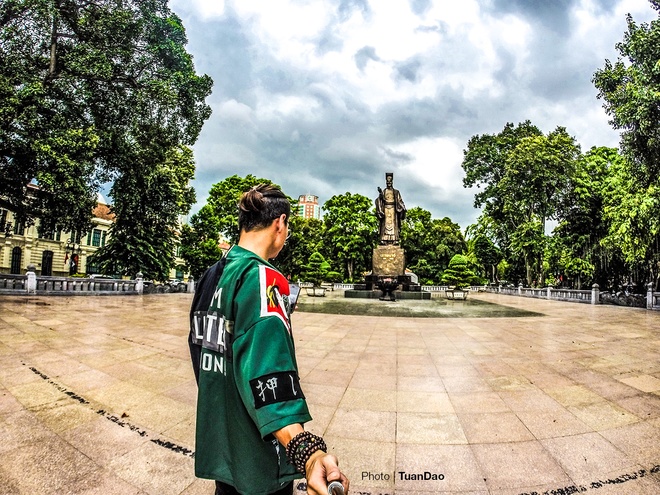 |
The statue is located in Chi Linh Park, Hoan Kiem District. The statue was opened in October 7th, 2004 and looks toward the Hoan Kiem Lake. It was created by Vi Thi Hoa, and was cast in pure copper.
Ly Thai To (974-1028) was the founder and first emperor of the Ly Dynasty (1009-1225). After ascending the throne, he moved the capital to Dai La (which he renamed as Thang Long) in 1010, which in the end became present day Ha Noi.
Long Bien Bride
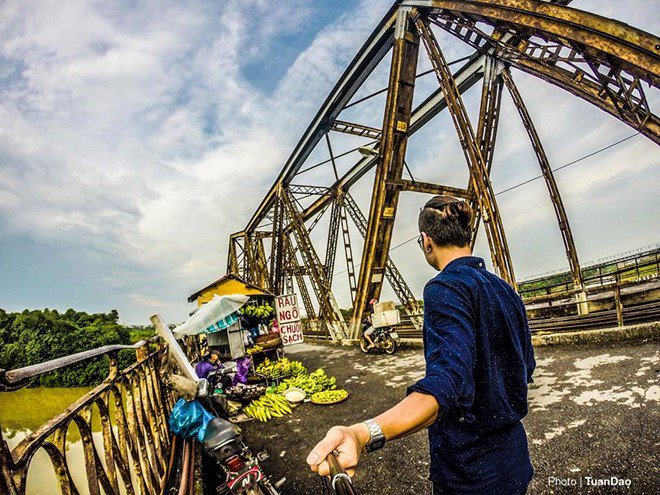 |
As the only bridge across the Red River that connected Hanoi to the highway leading to the northern port city of Hai Phong.
The bridge was initially called the Doumer Bridge. At the time of construction, the more than 2km-long bridge was one of the world’s largest bridges, and one of the most important works of the Far East. The Doumer Bridge was known as the first steel bridge across the Red River in Hanoi. It was built in 1898 and completed in 1902 by contractor Daydé et Pillé, under the leadership of the Indochina Governor Paul Doumer.
After the country’s liberation, the bridge was renamed Long Bien. For over 100 years, the bridge has seen many changes since the country’s wartime to peacetime, and has become a symbol of the history of Vietnam.
Ham Long Church
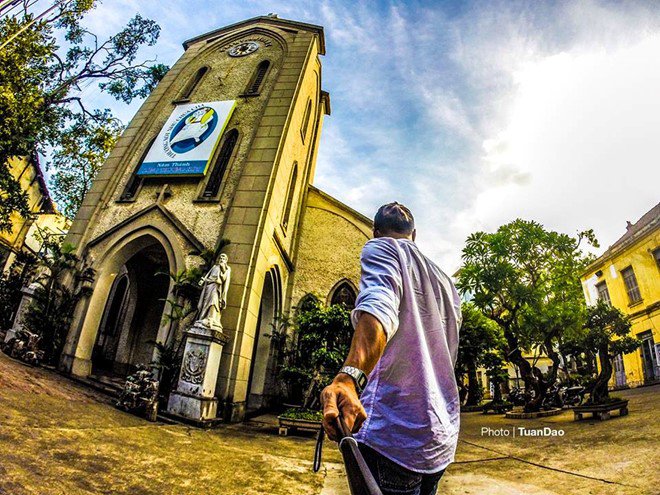 |
Ham Long is a Roman Catholic church in the centre district Hoan Kiem of Hanoi, Vietnam. The church was built at the end of the 19th century near an old street named Ham Long from which Ham Long church was called.
The church was designed and completed by a Vietnamese architect, with the height of 17 meters. It was built with traditional materials such as lime, bamboo and cardboard…to create arches and make echo effects when celebrating the Mass. The columns and altars are decorated with rope motifs like those on the tunic of the Francis order. The church’s patron saint is St. Anthony of Padua.
Today, Ham Long Church is one of the three major churches of Hanoi, together with Cua Bac Catholich Church and Hanoi Cathedral Church.
Dong Xuan Market
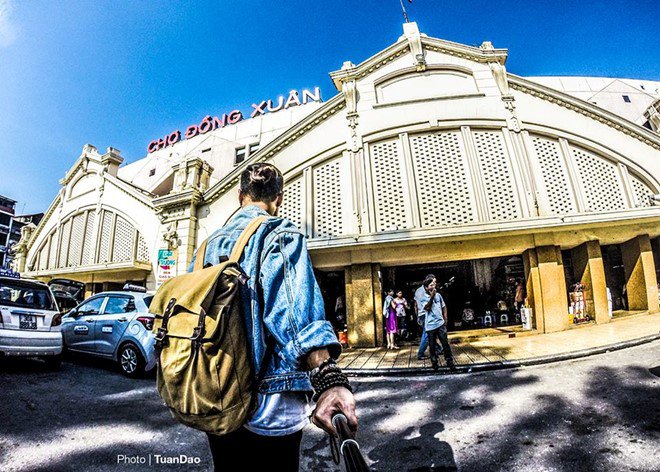 |
The Dong Xuan market, built in 1889 by the French, is the largest in Hanoi market covered and one of the most popular and crowded city markets.
Similar to most markets in Southeast Asia, Dong Xuan Market has a bustling wet market section on the ground floor, where locals shop for seafood, meat, and vegetables while the back section sells an array of pets (cats, dogs, and fish) and fresh flowers from all across Vietnam. There’s also a massive dining area within Dong Xuan Market, with food vendors selling Vietnamese coffee and exotic local dishes.
Hanoi flag tower
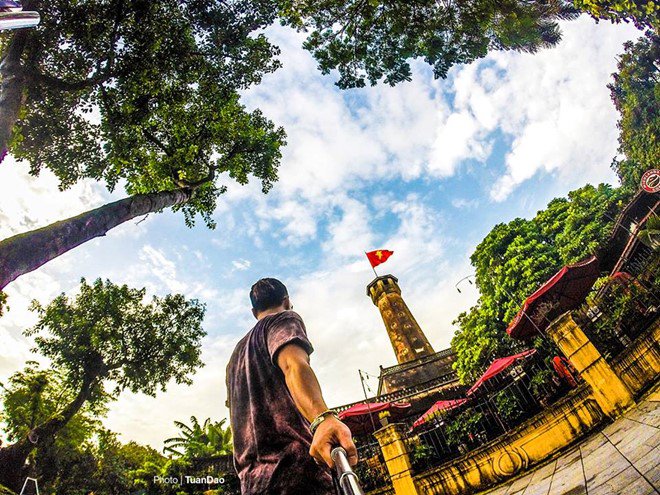 |
The tower was built in 1812 during the Nguyen dynasty as an observation post to the Hanoi Citadel.
The flag tower is composed of three tiers and a pyramid-shaped tower with a spiral staircase leading to the top inside it. The first tier is 42.5 m wide and 3.1 m high; the second – 25 m wide and 3.7 m high and the third – 12.8 m wide and 5.1 m high. The second tier has four doors. The words “Nghenh Huc” (To welcome dawn’s sunlight) are inscribed on the eastern door; the words “Hoi Quang” (To reflect light) – on the western door and “Huong Minh” (Directed to the sunlight) – on the southern door.
The tower is lighted by 36 flower-shaped and 6 fan-shaped windows. The National Flag of Vietnam is on top of the tower.
Hoan Kiem Lake
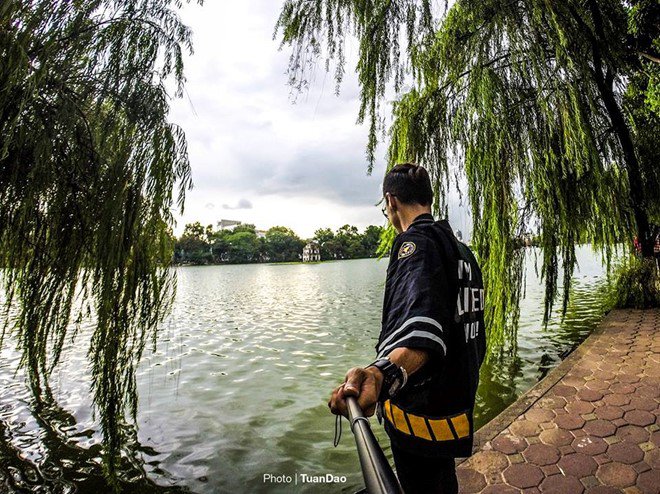 |
Hoan Kiem Lake (Sword Lake) is one of the major scenic spots in Hanoi and serves as a focal point for its public life.
According to the legend, in early 1428, Emperor Le Loi was boating on the lake when a Golden Turtle God (Kim Qui) surfaced and asked for his magic sword, Heaven’s Will. Le Loi concluded that Kim Qui had come to reclaim the sword that its master, a local God, the Dragon King (Long Vuong) had given him some time earlier, during his revolt against the Ming invaders. Later, Le Loi gave the sword back to the turtle after he finished fighting off the foreign invaders. Le Loi renamed the lake to commemorate this event, from its former name Luc Thuy meaning “Green Water”. The Turtle Tower (Thap Rua) standing on a small island near the centre of lake is linked to the legend.
Large soft-shell turtles, either of the species Rafetus swinhoei or a separate species named Rafetus leloii in honor of the emperor, had been sighted in the lake for many years. The last known inpidual was found dead on January 19th, 2016.
Near the northern shore of the lake lies Jade Island on which the Temple of the Jade Mountain (Ngoc Son Temple) stands. The temple was erected in the 18th century. Jade Island is connected to the shore by the wooden red-painted The Huc Bridge (The Huc, meaning Morning Sunlight Bridge)./.
Minh Phuong ( Photo by Tuan Dao )
Recommended
 Travel
Travel
Strategies for Sustainable Growth of Vietnam’s Tourism from International Markets
 Travel
Travel
Vietnam Strengthens Its Presence On The Global Tourism Map
 Multimedia
Multimedia
Phong Nha-Ke Bang National Park Named Top Adventure Travel Site
 Travel
Travel
Vietnam Welcomes Record-High Number of International Visitors
 Travel
Travel
Luxury Train From Hanoi To Hai Phong To Be Launched In May
 Travel
Travel
Phong Nha Named Top Budget-Friendly Travel Destination for Spring 2025: Agoda
 Travel
Travel
Four Indian Films Introduced to Lao Cai Audience
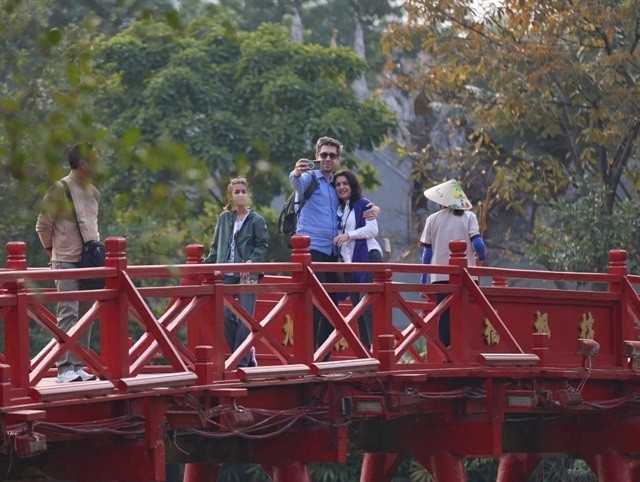 Travel
Travel
